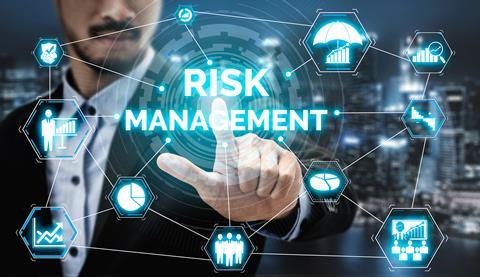Ruth Richardson, executive director of the ASRA, argues that current risk management approaches are creating a dangerous misalignment between the hazards we’re facing and the types of deep, transformative decisions that need to be made.
Policymakers around the world are still treating complex issues—including the climate crisis, the rise in global conflict, the spread of infectious diseases, and the threat of AI—separately, when they are inextricably linked.
The cascading impacts of Covid-19 highlight how the challenges of addressing systemic risk go well beyond conventional risk management and governance practices.

The pandemic illustrated the problem with reactive and linear thinking; over time, many unforeseen consequences of the pandemic became apparent.
The impacts include reduced educational outcomes, an increase in reported mental health challenges, and deepening social and racial inequality.
World leaders and businesses alike are still on the backfoot when it comes to risk assessment and strategic planning in today’s complex and uncertain operational context.
“Treating risks in siloes or simply continuing to focus on “known” and easily quantifiable risks is no longer sufficient.”
This is because systemic risks—the nature of their interconnection and capacity to cascade—pose fundamentally different challenges compared to risk assessment of any single problem or proposed solution.
Treating risks in siloes or simply continuing to focus on “known” and easily quantifiable risks is no longer sufficient. It creates a dangerous misalignment between the hazards we’re facing and the types of deep, transformative decisions that need to be made.
The case for systemic risk assessment
The impacts of interconnected risk are all around us.
Consider the extreme weather we’re seeing as a result of climate change, manifesting in intense heatwaves, prolonged droughts, and devastating floods. During the first six months of 2024, at least half of the G20 member countries experienced floods, above-average rainfall, wildfires, high temperatures, or severe cold spells.
The scale of the damage raises critical questions about how we assess and manage global, interlinked risks and their many ripple effects including economic impacts, social tension, exacerbating vulnerabilities, biodiversity loss, and others.
”Decision-makers need new tools and methods.”
Witness, too, the surge in dengue fever in Latin America as a direct result of climate change. In 2023, over 5 million cases were reported, with 5,000 dengue-associated deaths across 80 countries, a sharp increase since 2019.
As the climate warms, the range of mosquitoes is expanding and the number of people they infect is increasing. Beyond the lives lost and suffering inflicted, this rise will have cascading impacts on economies and communities.
Decision-makers need new tools and methods.These tools should consider the complex interplay between intra- and inter-systemic risks.
Additionally, decision-makers need processes that connect different agendas. These processes should enable meaningful, practical dialogue. The focus should be on policies that enhance the safety and well-being of people, ecosystems, and places.
Recommendations for decision-makers
As the G20 meet in Rio de Janeiro and reflect on the role of the State and their institutions and the ‘ability to respond in an effective and adaptive way to the needs and expectations of their populations in a world in constant transformation’, we offer four recommendations on what capabilities, capacities, and policy approaches are needed:
- Adopt tools and methods that can analyse the interconnected impacts and feedback loops of planetary, global, regional, and local risks.
- Redefine values and assumptions that are used to inform risk assessment. A critical question to ask in any risk assessment is: risk for whom and from what, where, and when? This will re-centre not just vulnerable communities but also ecosystems in our frame of values.
- Revitalise community engagement strategies, seeking to integrate diverse disciplines and perspectives into decision-making. For example, collaborations with various industries and communities that experience and respond to risk differently can bring a breadth of perspectives to the analysis.
- Upskill and encourage innovative experimentation now and in ‘non-emergency’ times, building the muscle of systems-thinking and how to effectively mitigate and manage risks before they turn into crises.
Now is the moment
The path forward is uncertain. Yet, in the same way that we see negative cascading impacts, positive actions operate according to the same logic. Although we cannot predict all shocks, we can improve our readiness to deal with them.
This is precisely the moment that we need to see countries unite to co-develop responses that prevent risks from escalating and transform our systems to mitigate and contain inherent weaknesses.
The current polycrisis demands innovative thinking and collective engagement. The G20, home to some of the world’s largest economies, and the vision set of the State of the Future dialogue is the ideal platform to radically rethink risk.
Ruth Richardson is executive director of the Accelerator for Systemic Risk Assessment (ASRA), an independent, non-profit initiative hosted by the United Nations Foundation.
With a clear focus on the need for an agile state and multidisciplinary and multi-sectoral dialogue, the G20 States of the Future meeting is an opportunity to open up a conversation about the need to radically rethink risk, and to explore how a systemic risk approach enables decision-makers to shift from a reactive response to repeated crises to more proactive and forward-looking actions.
Source











No comments yet